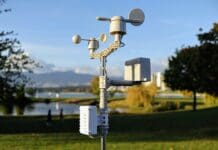This post is also available in:
 עברית (Hebrew)
עברית (Hebrew)
The next generation of Wi-Fi is being built for a world where homes, workplaces, and public spaces are more crowded with connected devices than ever before. While earlier standards competed on headline speeds, Wi-Fi 8 focuses on a different challenge: making wireless communication predictable, resilient, and context-aware, even in environments where dozens of devices are fighting for the same airwaves.
Modern networks struggle not because they’re slow, but because they’re overloaded. Video calls drop, gaming sessions lag, and industrial sensors miss critical updates when traffic competes or networks lack coordination. Wi-Fi 8 addresses these problems by introducing new mechanisms for deterministic performance, ensuring data is delivered with consistent timing rather than best-effort throughput. This shift makes the technology suitable for applications that demand reliability—such as real-time collaboration, AR/VR, and remote operations.
The standard also improves spectrum efficiency, latency, and power consumption through upgraded modulation, coding techniques, and multi-access point coordination. These features allow devices to use available frequencies more intelligently, reduce interference, and extend range. Enhanced encryption and stronger protection for management frames make Wi-Fi 8 the most secure version to date, helping to shield networks from spoofing, eavesdropping, and manipulation.
An important addition is native support for AI-enabled functionality, such as Wi-Fi sensing, proximity ranging, and context-aware resource allocation. This opens the door to smarter homes and offices where networks adapt automatically to user behavior, occupancy, and device needs. In enterprise environments, these capabilities could optimize conference rooms, automate energy use, or help organizations manage dense deployments of laptops, sensors, and autonomous systems.
For defense and homeland security sectors, Wi-Fi 8’s emphasis on reliability and interference-resistant control channels could support operations in complex facilities or emergency response zones. Deterministic networking and improved device awareness are particularly relevant for robotics, secure communications, and command-and-control applications that depend on stable wireless performance.
Intel’s recently published White Paper provides a detailed technical breakdown of these capabilities, including multi-AP coordination strategies, spectrum planning, and energy-efficiency improvements. As wireless environments become more congested and AI-driven systems grow more common, Wi-Fi 8 is positioned to serve as the backbone of next-generation connectivity—quietly prioritizing reliability over raw speed, and intelligence over simple bandwidth.
The White Paper can be seen here.


























